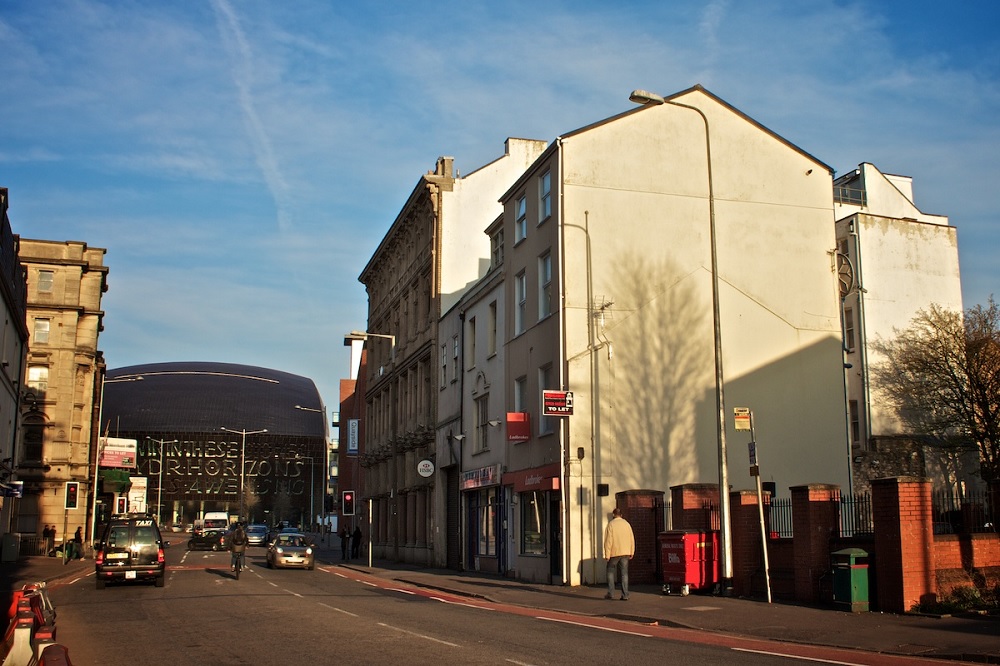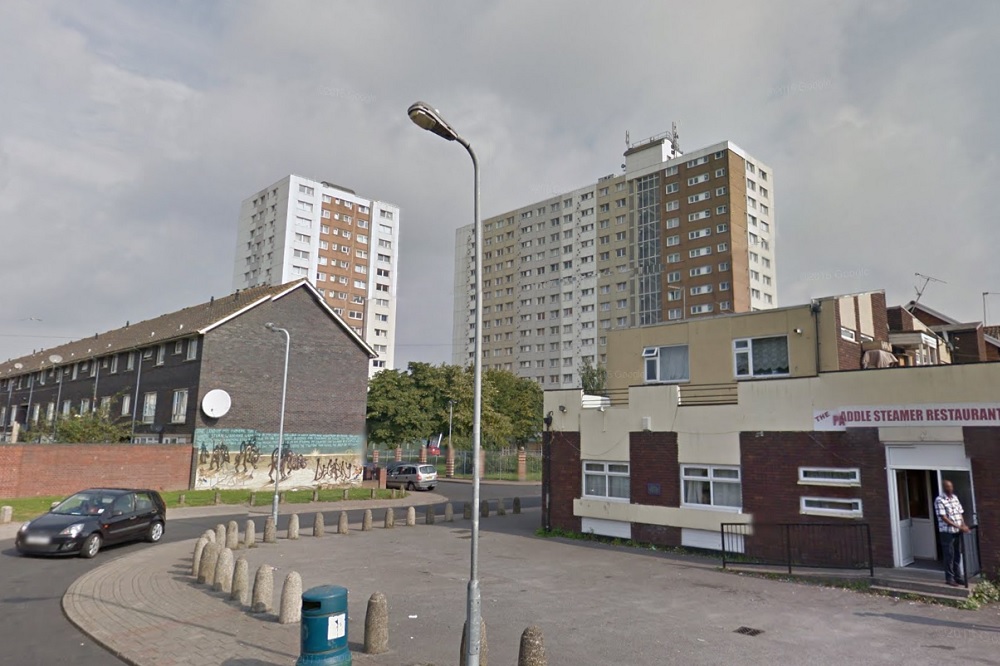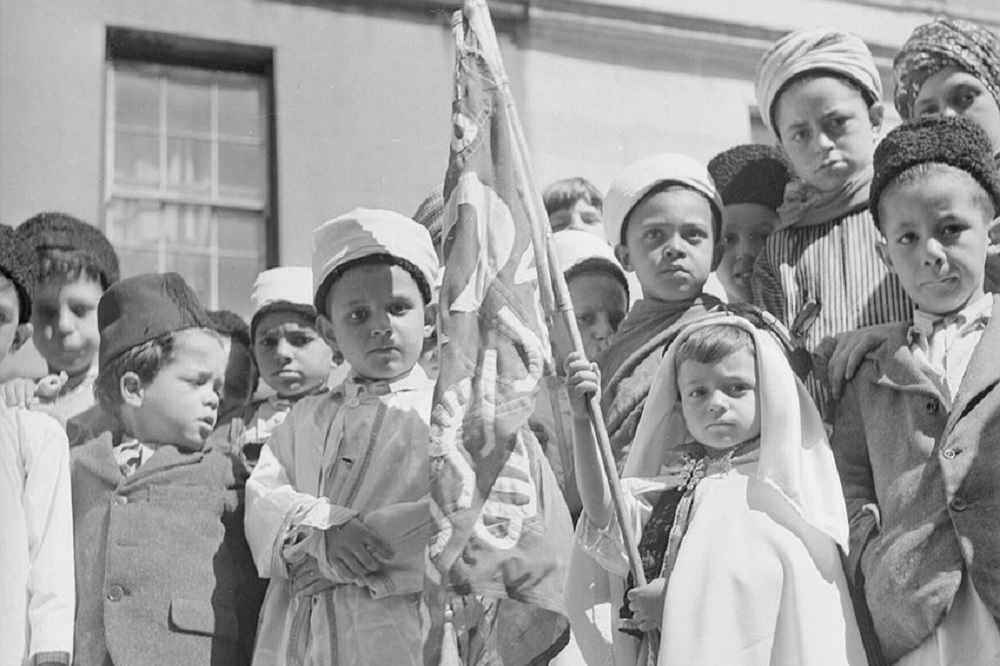‘They look at us like we’re foreigners’: the stories of gentrification in Cardiff

Christian S. Phelps
To pick up her nieces and nephew from school, Mymuna Soleman strolls past groups of holidaymakers in the Cardiff Bay waterfront, a newly renovated section of Wales’s capital city featuring sleek pavement, a modern theatre, new boutiques, restaurants, cafés, and museums.
Cardiff doesn’t look the way it used to. And to her, it doesn’t feel the same either.
Development seems to be moving the city forward, but some residents say these renovations have unintended consequences. Soleman, 30, has lived in Cardiff her whole life, and she says the city would do well to remember the history of Cardiff Bay.
“It was my ancestors that actually built this area when you brought black people over from their country—and other people, Italians, Yemenis, … Caribbean people, there’s so many people,” Soleman says.
Spend enough time in Cardiff and you’re bound to come across references to Tiger Bay, the historic name for Cardiff Bay and its surrounding area. It was once the only place where people of colour could live, and the resulting sense of community was particularly strong, according to Yasmin Begum, 25, another lifelong Cardiff resident.
Many say the area is now luring wealthy, mostly white visitors and residents at the expense of these historic communities—a process known as gentrification. Butetown, the ward including Cardiff Bay, has transformed into the home of these waterfront restaurants, the Wales Millennium Centre for the performing arts, and huge fountains to decorate public squares.
“It’s a bit too posh,” Soleman says of the new urban landscape. “It’ll attract people who think they own the world.”
Soleman has experienced racism, sexism, and Islamophobia throughout her life, but insists that a cultural shift is happening before her eyes in Butetown and the rest of Cardiff.
“The people that come … look at us like we’re foreigners, even though Butetown is very much known for its multicultural identity,” Soleman says. “People are much less tolerant, in a sense, towards people of other cultures.”
She feels that this cultural shift has a snowball effect. As people with privilege come to the city, their prejudices come with them.
People are more likely to be stopped and searched by police in Butetown than anywhere else in Cardiff. And unlike white peers she knows from her time in university, Soleman is currently unemployed, saying biases against black, Muslim women like herself are obstacles to her job prospects.
Local families suffer as wealthier people move to a community, suggests Dr Huw Williams, a professor of political philosophy at Cardiff University who has been involved in the Grangetown Community Gateway project, a local anti-gentrification effort.
“Families are unable, perhaps, to … buy houses in the area they were brought up in,” he explains. “The younger generations who might want to stay in the area and bring up the children close to the grandparents … it’s difficult for some of these people to do that because the house prices are inflated.”

‘What’s important to people’
Dr Williams says the difference in how communities receive regeneration projects highlights the relationship between money and culture.
“It’s not simply about the creation of more wealth, it’s what you do with the wealth you have,” he says. “What’s important to people, in terms of their heritage and their identity, that are not quantifiable in terms of profit and wealth and financial enrichment?”
In many communities, it’s the arts.
The Wales Millennium Centre has become one of Cardiff’s most recognisable landmarks, a grand building with a concrete courtyard and backlit lettering, home to theatrical and musical productions. Its doors opened in 2004.
Since then, the Arts Council of Wales and other public bodies have donated tens of millions of pounds to the centre and ensured its standing as one of Wales’s most admirable venues.
But just blocks away, the Butetown History and Arts Centre, which also relied on public funding, closed its doors in 2016. The centre had served as cultural hub for black and minority ethnic residents, archiving oral histories of black populations in the area and hosting numerous exhibitions for local artists.
“They couldn’t find £40,000 to keep open an arts centre in the neighbouring community,” Dr Williams says incredulously. “When you look at something like that, and people say that we have to prioritise business and wealth creation, first of all you have to look at what you’re doing with the money you’ve got.”
The Arts Council of Wales declined to answer questions regarding its funding of the two centres.

History repeating
Now a master’s student, Yasmin Begum says gentrification is nothing new to the Cardiff Bay docks, Butetown, or the city as a whole.
“In the 1970s, my great-grandma, my mum’s mum’s mum, used to run pubs in the docks,” she says. “The government had bought her mum and dad’s house, made it into the flyover and Tesco. And then she moved to the docks, and the government bought her house again. And then she ended up in a suburb.”
As the docks devolved into mudflats, the city took on sweeping efforts to build the Cardiff Bay of today over the course of two decades and billions in development funds. Even then, Tiger Bay communities lamented the effort’s focus on attracting private investment.
And then, like Begum’s grandparents, many were priced out of their homes.
She and Soleman both say Cardiff’s communities are open to development, but that the city should make its process accessible and transparent. They feel that consultations between residents, planners, and developers can be very productive, if they are treated as real collaborations and not formalities.
If local people of colour were in charge of the plans, they say, the process would be different. Begum suggests more rent control and an increase in council-owned housing to help low-income families keep up with change. Cardiff Councillor Lynda Thorne says the council is committed to exactly that.
“It’s about having mixed communities, where people live side-by-side and nobody’s judged,” Cllr Thorne says. “So there’s some of the low-cost homes for shared ownership, some on the open market, and some council homes—and if you went to those sites, you actually wouldn’t be able to see the difference.”
For now, Begum believes the old patterns of gentrification are continuing. “Not only is the city making the same mistakes, but the mistakes are being accelerated,” she says.
Many people will enjoy new shops and performances this summer without even seeing the repercussions. Not far behind the fancy new buildings lives a strained relationship between developers and residents.
“At the end of their tunnel, that light, for them, is money. And it doesn’t really include people and values and morals and communities, so I think definitely that’s what frustrates people so much,” Soleman says. “When people are here for their own gain, there’s no trusting, is there?”
Support our Nation today
For the price of a cup of coffee a month you can help us create an independent, not-for-profit, national news service for the people of Wales, by the people of Wales.





